
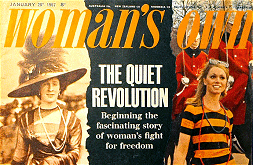

|
 |
|
 |
The
first British newspaper, called the 'Weekly News', was published in London
in 1622. In 1785 the 'Daily Universal Register' (renamed 'The Times' in
1788) began publication in London and in 1791 'The Observer', Britain's
oldest national Sunday newspaper, started publication. The Times front page
featured no headline news and carried lists of births, marriages and deaths
until May 1966. Britain's oldest continuously published newspaper, 'The
London Gazette', began life in 1665 as the 'Oxford Gazette' (renamed the
'London Gazette' in 1666) initially reporting on foreign events but later
evolving as a means of communicating official government notices. Regional
and local press publications started developing during the 1830s. During
the 18th and 19th centuries the industry moved towards mass production following
advances in paper manufacturing processes and printing machinery, and a
significant growth in public literacy. The Sixties saw major changes in the newspaper and magazine industry with the advent of colour supplements for papers and the first 'tabloids' appearing, while many of the older papers were either taken over or ceased publication. The Sunday Times was the first newspaper to include a colour supplement, soon followed by The Telegraph and The Observer. The first issue of The Observer magazine was published on 6th September 1964 containing photographs by John Hedgecoe and Loomis Dean, with a picture story on the London Stock Exchange provided by Gerry Cranham. Its front cover featured Hedgecoe's portrait of Lord Mountbatten, the first colour photograph published by The Observer. Newspapers had previously been organs for conveying current events or editorial opinions. A new diversity of articles started appearing aimed at different groups of the population. One of the best-known and longest-lasting regular additions was initiated by the Daily Mail in 1968. Called 'Femail', it appeared for the first time on Tuesday October 29th and was edited by Shirley Conran, examining, discussing and enlarging on aspects of what they perceived to be the interests of their female readership. Magazines, too, took on a whole new look to match the changing culture. Women's magazines like Nova were very much more visually inventive, as were Vogue, edited in the Sixties by Diane Vreeland, and Queen, using photo-lithography to adapt type to fit around pictures. Queen carried articles about the latest jet-set upper class 'fashion icons' using photographers such as Cecil Beaton, Anthony Armstrong-Jones, Cartier Bresson and Norman Parkinson but also, importantly, dealt with social issues. It was the first magazine to do an in-depth feature on 'social' drug usage and also championed feminist issues. The Sixties saw a battle for supremacy in the field between Queen and an American 'import' called Harper's Bazaar. Queen held the high ground right up until the end of the Sixties, when its circulation started to founder and it was eventually taken over for nothing, the two publications merging to become Harper's and Queen. A brand-new concept in literature hit the streets with the birth of 'underground' magazines like 'IT' (International Times), 'Yarrow Roots', 'Gandalf's Garden' , 'OZ' and Clive Goodwin's 'Black Dwarf', that catered to the anti-establishment, idealistic counter-culture of Sixties youth. Even the magazine 'Time Out' started as an 'underground' publication. Their pictures were anarchic in style, frequently being printed out of focus or super-imposed, and the type was laid unconventionally, sometimes appearing diagonally or even upside-down. The other great anti-establishment publication, the satirical magazine 'Private Eye', made its first appearance in 1961, featuring its first 'gag' picture cover in April 1962. |
 |
 |
 |
 |
 |
 |
|
2nd Nov
1903 - UK's oldest national tabloid.
Sunday Mirror 14th Mar 1915 (originally as The Sunday Pictorial) |
1st Jan
1785. Broadsheet until 30th Oct 2004
Sunday Times 18th Feb 1821 (as 'The New Observer' then 'Independent Observer') re-named 'Sunday Times' 20th Oct 1822 |
Founded
in Manchester in 1909
Merged with Daily Graphic in 1946. Merged with Daily Mail in 1971 |
Formed
from merger of Daily News (1846)
and Daily Chronicle (1872) in 1876. Merged with Daily Mail 17th Oct 1960 |
Reynold's
Weekly Newspaper (1850)
Reynold's Illustrated News (1924) Reynold's News (1936) re-named 23rd Sep 1962. Closed 1967 |
1st Oct
1843.
A broadsheet until 13th May 1984. Closed 7th July 2011 |
 |
 |
 |

|
 |
 |
|
14th
Sep 1964
Formed from old Daily Herald |
25th
Jan 1911
Ceased and re-named The Sun 14th Sep 1964 |
25th
Aug 1959
Broadsheet until 10th Sep 2005 |
21st
May 1827 as 'The Standard'
London Evening Standard since May 2009 |
29th
Jun 1855. Also
Sunday Telegraph from 5th Feb 1961 |
4th
Dec 1791
World's oldest Sunday newspaper |
 |
 |
 |
 |
 |
 |
|
13th
Feb 1888
Merged with Financial News (1884) in 1945 |
24th
Apr 1900
Sunday Express (1918) |
30th
April 1859
Merged with Racing Post in 1998 |
14th
May 1896. A broadsheet until 1971.
Mail on Sunday (1982) |
16th
Oct 1881 as 'The People'
Re-named The Sunday People in 2002 |
26th
Jul 1881
Merged with Evening Standard 31st Oct 1980 |
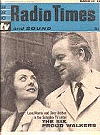 Radio Times 2000th edition  The Sun First edition 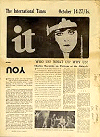 International Times  Private Eye 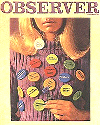 Observer Colour Supplement 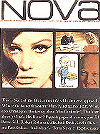 Nova magazine First edition 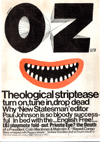 OZ magazine First edition |
1960
|
 
           |
1960 |
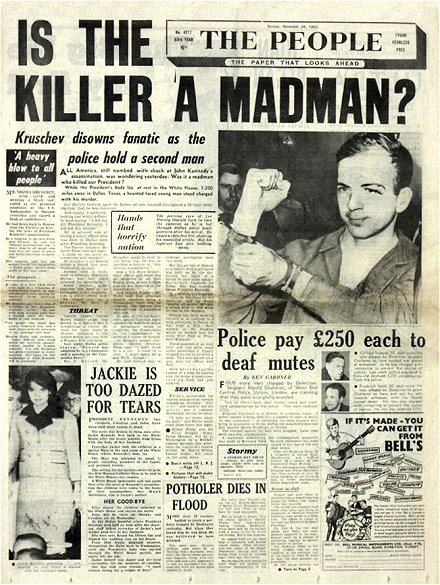 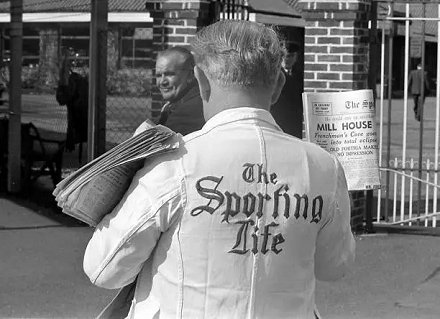 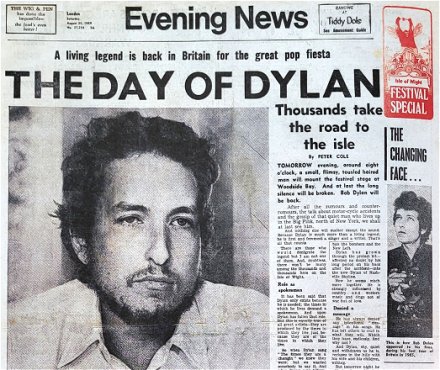 |
|
1961
|
1961 |
|||
|
1962
|
1962 |
|||
|
1963
|
1963 |
|||
|
1964
|
1964 |
|||
|
1965
|
1965 |
|||
|
1966
|
1966 |
|||
|
1967
|
1967 |
|||
|
1968
|
1968 May Gandalf's Garden magazine is first published May Black Dwarf newspaper first published 13th October British publisher Sir Stanley Unwin dies |
|||
|
1969
|
1969 |
|
|
All
Original Material Copyright SixtiesCity
Other individual owner copyrights may apply to Photographic Images |